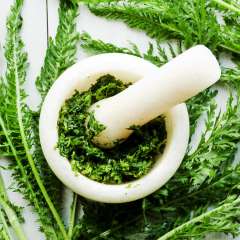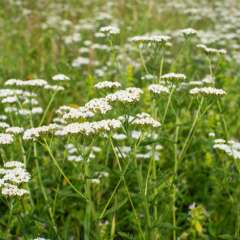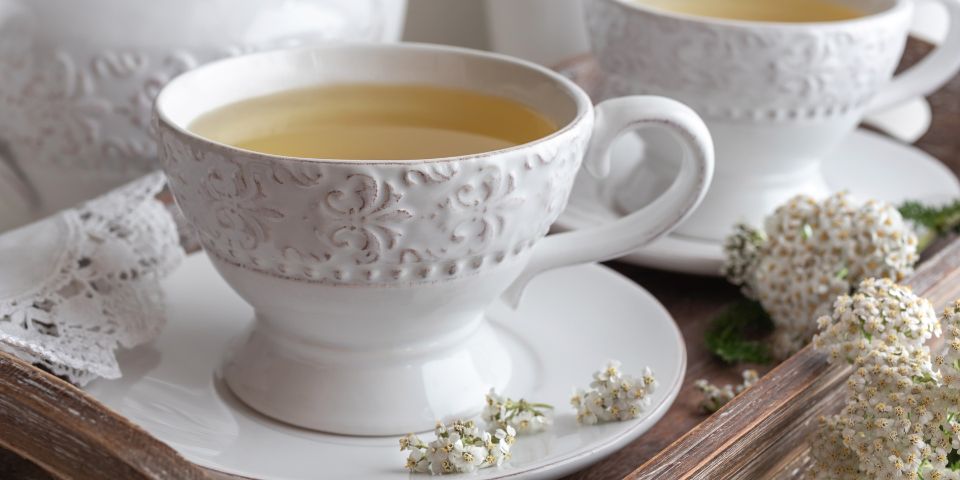Are you looking to boost your overall health and well-being? Look no further than the remarkable yarrow plant (Achillea millefolium). With its extensive history as a medicinal herb, yarrow offers an array of health benefits that have been cherished for centuries. From aiding digestion to promoting wound healing, this herb is a powerhouse when it comes to natural remedies. This perennial herb also benefits your garden by attracting pollinators and providing nutrients to the soil. If you're seeking a versatile and reliable addition to your survival garden, yarrow is an excellent choice.
Medicinal Benefits of Yarrow
Antiseptic
Since the times of the Ancient Greeks, yarrow has been a valuable asset in the treatment of wounds. It gets its name from the Greek god Achilles who was, according to legend, known for using this herb to staunch wounds on the battlefield. Its volatile plant oils have antiseptic properties that can aid in wound healing, reduce inflammation, and stimulate the formation of tissue. It is commonly used in poultices and ointments when treating wounds.
Anti-Inflammatory
Yarrow is thought to act as an anti-inflammatory and antioxidant when applied to the skin. The plant's natural astringent properties make it useful in treating skin conditions like acne and eczema. Yarrow has been used to relieve fever, menstrual cramps, treat hemorrhoids, varicose veins, arthritis, colds, headaches, and toothaches.
Alleviates Digestive Issues

Yarrow has a history of use in the treatment of digestive issues like gastritis, indigestion, diarrhea, ulcers, and irritable bowel syndrome. The medicinal herb contains flavonoids and alkaloids which are compounds known to soothe digestive complaints. It is acclaimed for helping to heal and tone the mucus membranes throughout the gastrointestinal tract.
Both yarrow flowers and leaves are edible and can be used to create tea, tinctures, poultices, essential oils, and ointments for medicinal purposes. As with any natural compound, there is always a slight risk of sensitivity for some people. It is always good to seek professional advice when using wild plants as medicines.
How Yarrow Benefits Your Garden
Helpful Ground Cover
Yarrow will naturally grow to about three feet tall and bloom throughout the summer, or you can grow this herb as a fragrant ground cover by mowing it several times a year. If you do this, be aware that you might not get flowers, but the foliage is quite attractive and will provide a habitat for insects.
Yarrow has deep roots that mine the soil for potassium, calcium, and magnesium, making it useful as a nutrient-rich mulch. There is also some evidence that it may also mine soil for copper and zinc which means it could be used in cleaning up lead-contaminated soil. If grown in contaminated soil, be sure to dig up the entire plant at the end of the season and dispose completely. Lead-contaminated plants should not be consumed or used for mulch.
Wonderful Companion Plant

The flowers of the yarrow plant will attract many types of pollinators that prefer umbel-shaped flowers, like lacewings, parasitoid wasps, ground beetles, spiders, ladybugs, and hoverflies. These insects also use the plant as a habitat for over-wintering and egg-laying. Yarrow emits an odor that deters many pest insects.
Growing Yarrow from Seed
Start yarrow seeds indoors 6 to 8 weeks prior to the last frost or sow directly in the garden in the fall for spring growth. Yarrow seeds need cold stratification and light for successful germination, which should happen in 14 to 28 days. Once the danger of frost has passed, transplant seedlings 12 inches apart.
Yarrow prefers full sun and well-drained soil. It will thrive in hot, dry conditions, but does not tolerate constantly wet soil. Plants will grow 2 to 4 feet tall and are very drought tolerant. Deadhead flowers when they start to fade to encourage more blooms.
Every 3 to 5 years you can divide yarrow plants to help keep them healthy. Dig up the plants in the early spring or fall to divide.
Whether you are an avid gardener or simply looking for a natural remedy, growing yarrow is a wise choice. Its benefits extend beyond its aesthetic appeal, making it a valuable asset in any survival garden.

























